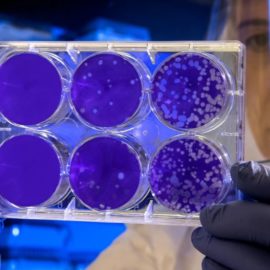

This article is an excerpt from the Shortform book guide to "Fast Food Nation" by Eric Schlosser. Shortform has the world's best summaries and analyses of books you should be reading.
Like this article? Sign up for a free trial here .
How common is McDonald’s food poisoning? Why is McDonald’s food so susceptible to contamination and disease?
McDonald’s food poisoning often consists of bacterial illnesses like E. coli. Factory farming and unsanitary conditions in restaurants can lead to food poisoning issues.
Read more about McDonald’s food poisoning and the conditions that make this possible.
McDonald’s Food Poisoning and Contamination
Beyond its exploitative labor practices at every level of the supply chain, fast food has also proven an ideal vector for the spread of foodborne pathogens into America’s food system. Because of the fast food industry’s demands for highly centralized production and enormous scale, tainted meat (particularly the ground beef used in hamburgers) processed at one meatpacking plant can cause a nationwide epidemic of food poisoning—with tragic and deadly consequences.
Going Viral
Outbreaks of E. coli, a virulent pathogen primarily found in beef, have become far more common since the rise of fast food. One 1997 outbreak was traced to a single plant in Nebraska that had been built to supply ground beef to Burger King, resulting in the nationwide recall of 35 million pounds of meat (25 million of which had already been eaten). Most of the other major foodborne pathogens like Salmonella, Listeria, and Clostridium are caused by animal feces making it into the meat we eat. This has caused several McDonald’s food poisoning outbreaks.
Foodborne pathogens cause more than just an upset stomach. They can lead to heart disease, neurological disorders, kidney damage, and even death. And they’re becoming more common and more widespread thanks to fast food’s revolutionary changes in how American food is produced. A centralized system of food production exponentially expands the reach and scope of outbreaks, where they might have been confined to a particular locality just a few decades ago. The very same system that creates enormous amounts of uniform ground beef for McDonald’s and Burger King is also highly adept at spreading disease. Foodborne illness has truly gone viral.
Poison Happy Meals
Tragically, some of the worst stories of fast food-related foodborne illness are those involving children. In 1993, doctors in Seattle noticed a sharp spike in the number of local children being admitted to emergency rooms with bloody diarrhea. Health officials traced the source to E. coli in hamburger patties at Jack-in-the-Box that had originated from a California-based meatpacking company. Eventually, more than 700 people across four states were sickened, most of them children. One six-year-old girl died in her mother’s arms after suffering through excruciating pain and three heart attacks. In 1982, E. coli was also found in burgers sold at McDonald’s restaurants in Oregon and Michigan, causing dozens of children to fall ill.
Children under the age of five are especially vulnerable to E. coli, and the pathogen is now the leading cause of kidney failure among American children. And its effects on children are truly horrific. In 1993, one six-year-old boy developed abdominal cramps after eating a tainted hamburger. This progressed to bloody diarrhea, the destruction of internal organs, and the liquifying of his brain before his ultimate death.
Distressingly, much of this tainted meat is served to children in their school cafeterias through the USDA’s school lunch program. Some of the meatpackers who provide ground beef for the program have been found to be processing cattle that are already dead when they reach the plant, mixing rotten meat into packages of ground beef, and maintaining facilities infested with rats and cockroaches. Conservative judges have given legal cover to ground beef processors by ruling that they cannot be held responsible for bacteria in their meat, when the bacteria might have come from the slaughterhouses they purchased it from. This novel argument ensures that meatpackers and fast food chains face little legal incentive to demand better standards from their suppliers.

———End of Preview———
Like what you just read? Read the rest of the world's best book summary and analysis of Eric Schlosser's "Fast Food Nation" at Shortform .
Here's what you'll find in our full Fast Food Nation summary :
- How the fast food industry reshaped the American economy
- How fast food marketing is manipulating you
- Why the rise of fast food has destroyed family farms across America






